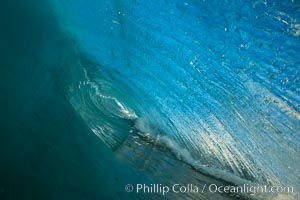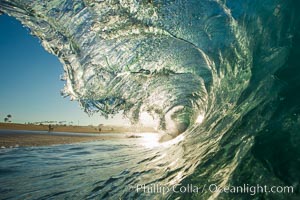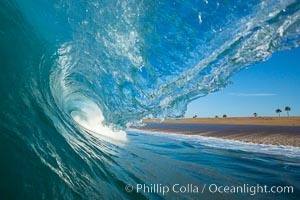
Breaking wave, morning, barrel shaped surf, California.
Location: The Wedge, Newport Beach, California
Image ID: 27985
Location: The Wedge, Newport Beach, California
Image ID: 27985

Breaking wave, morning, barrel shaped surf, California.
Location: The Wedge, Newport Beach, California
Image ID: 27988
Location: The Wedge, Newport Beach, California
Image ID: 27988
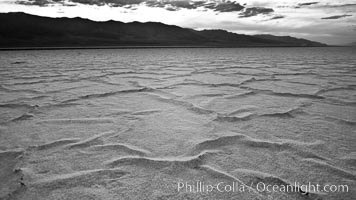
Salt polygons. After winter flooding, the salt on the Badwater Basin playa dries into geometric polygonal shapes.
Location: Badwater, Death Valley National Park, California
Image ID: 25299
Location: Badwater, Death Valley National Park, California
Image ID: 25299
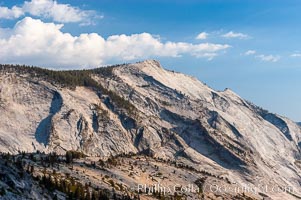
Clouds Rest viewed from Olmsted Point. Clouds Rest is one of the most massive -- if not the singlemost massive -- granite monoliths in the world. A vast lobe of Mesozoic-era granodiorite magma cooled to rock and was gradually uplifted to its present altitude of 9926 ft. Later, glaciers cut it into its present shape.
Location: Yosemite National Park, California
Image ID: 09964
Location: Yosemite National Park, California
Image ID: 09964
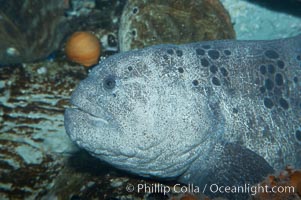
Wolf eel, although similar in shape to eels, is cartilaginous and not a true fish. Its powerful jaws can crush invertibrates, such as spiny sea urchins. It can grow to 6 feet (2m) in length.
Species: Wolf eel, Anarrhichthys ocellatus
Image ID: 11847
Species: Wolf eel, Anarrhichthys ocellatus
Image ID: 11847

Wolf eel, although similar in shape to eels, is cartilaginous and not a true fish. Its powerful jaws can crush invertibrates, such as spiny sea urchins. It can grow to 6 feet (2m) in length.
Species: Wolf eel, Anarrhichthys ocellatus
Image ID: 11848
Species: Wolf eel, Anarrhichthys ocellatus
Image ID: 11848
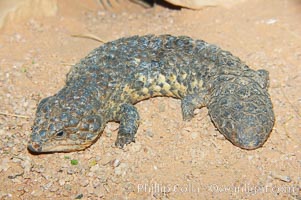
Shingleback lizard. This lizard has a fat tail shaped like its head, which can fool predators into attacking the wrong end of the shingleback.
Species: Shingleback lizard, Trachydosaurus
Image ID: 12571
Species: Shingleback lizard, Trachydosaurus
Image ID: 12571

Shingleback lizard. This lizard has a fat tail shaped like its head, which can fool predators into attacking the wrong end of the shingleback.
Species: Shingleback lizard, Trachydosaurus
Image ID: 12572
Species: Shingleback lizard, Trachydosaurus
Image ID: 12572

Shingleback lizard. This lizard has a fat tail shaped like its head, which can fool predators into attacking the wrong end of the shingleback.
Species: Shingleback lizard, Trachydosaurus
Image ID: 12573
Species: Shingleback lizard, Trachydosaurus
Image ID: 12573

Shingleback lizard. This lizard has a fat tail shaped like its head, which can fool predators into attacking the wrong end of the shingleback.
Species: Shingleback lizard, Trachydosaurus
Image ID: 12574
Species: Shingleback lizard, Trachydosaurus
Image ID: 12574

The bisons massive head is its most characteristic feature. Its forehead bulges because of its convex-shaped frontal bone. Its shoulder hump, dwindling bowlike to the haunches, is supported by unusually long spinal vertebrae. Over powerful neck and shoulder muscles grows a great shaggy coat of curly brown fur, and over the head, like an immense hood, grows a shock of black hair. Its forequarters are higher and much heavier than its haunches. A mature bull stands about 6 1/2 feet (2 meters) at the shoulder and weighs more than 2,000 pounds (900 kilograms). The bisons horns are short and black. In the male they are thick at the base and taper abruptly to sharp points as they curve outward and upward; the females horns are more slender.
Species: American bison, Bison bison
Location: Yellowstone National Park, Wyoming
Image ID: 13134
Species: American bison, Bison bison
Location: Yellowstone National Park, Wyoming
Image ID: 13134

Hermit crab. Hermit crabs wear shells to protect their soft abdomens, which are asymmetrical and curved to fit the spiral shape of their shell. Like all crabs, hermit crabs are decapods; they have five pairs of legs, including a pair of claws. One claw is much larger than the other, the hermit crab uses it for defense and food shredding while it uses the smaller claw for eating. The second and third pairs of legs help the crab walk, and the last two pairs hold the hermit crab in its shell.
Species: Hermit crab, Pagurus
Image ID: 13693
Species: Hermit crab, Pagurus
Image ID: 13693

Grunt sculpin. Grunt sculpin have evolved into its strange shape to fit within a giant barnacle shell perfectly, using the shell to protect its eggs and itself.
Species: Grunt sculpin, Rhamphocottus richardsoni
Image ID: 13724
Species: Grunt sculpin, Rhamphocottus richardsoni
Image ID: 13724

Grunt sculpin poised in a barnacle shell. Grunt sculpin have evolved into its strange shape to fit within a giant barnacle shell perfectly, using the shell to protect its eggs and itself.
Species: Grunt sculpin, Rhamphocottus richardsoni
Image ID: 13725
Species: Grunt sculpin, Rhamphocottus richardsoni
Image ID: 13725

Grunt sculpin poised in a barnacle shell. Grunt sculpin have evolved into its strange shape to fit within a giant barnacle shell perfectly, using the shell to protect its eggs and itself.
Species: Grunt sculpin, Rhamphocottus richardsoni
Image ID: 13726
Species: Grunt sculpin, Rhamphocottus richardsoni
Image ID: 13726

Grunt sculpin. Grunt sculpin have evolved into its strange shape to fit within a giant barnacle shell perfectly, using the shell to protect its eggs and itself.
Species: Grunt sculpin, Rhamphocottus richardsoni
Image ID: 13727
Species: Grunt sculpin, Rhamphocottus richardsoni
Image ID: 13727
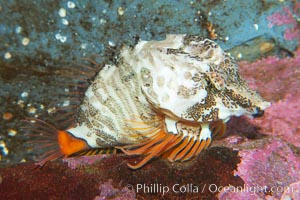
Grunt sculpin. Grunt sculpin have evolved into its strange shape to fit within a giant barnacle shell perfectly, using the shell to protect its eggs and itself.
Species: Grunt sculpin, Rhamphocottus richardsoni
Image ID: 13728
Species: Grunt sculpin, Rhamphocottus richardsoni
Image ID: 13728
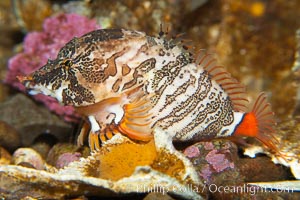
Grunt sculpin. Grunt sculpin have evolved into its strange shape to fit within a giant barnacle shell perfectly, using the shell to protect its eggs and itself.
Species: Grunt sculpin, Rhamphocottus richardsoni
Image ID: 13729
Species: Grunt sculpin, Rhamphocottus richardsoni
Image ID: 13729

Grunt sculpin. Grunt sculpin have evolved into its strange shape to fit within a giant barnacle shell perfectly, using the shell to protect its eggs and itself.
Species: Grunt sculpin, Rhamphocottus richardsoni
Image ID: 13730
Species: Grunt sculpin, Rhamphocottus richardsoni
Image ID: 13730

Grunt sculpin. Grunt sculpin have evolved into its strange shape to fit within a giant barnacle shell perfectly, using the shell to protect its eggs and itself.
Species: Grunt sculpin, Rhamphocottus richardsoni
Image ID: 13731
Species: Grunt sculpin, Rhamphocottus richardsoni
Image ID: 13731

